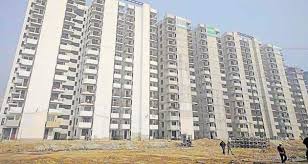The year 2023 marked an extraordinary phase for India’s real estate sector, with property sales reaching new heights amid rising consumer confidence and a robust Indian economy. The sector’s outlook for the coming year looks even brighter.
Read More: Noida Expressway: A hotspot for real estate investments
The post-pandemic surge in demand helped the property market withstand rising interest rates, which began as a response to inflation pressures from the Russia-Ukraine conflict and global supply chain disruptions. Initially, in 2022, the rising rates didn’t deter buyers, leading to a robust performance in real estate, which was already recovering post-Covid. However, as interest rates and inflation climbed, concerns grew, threatening to dampen consumer enthusiasm.
These concerns eased when the Reserve Bank of India paused its rate hikes in April 2023, injecting certainty among property buyers. Market analysts now anticipate potential rate cuts in the future.
Forecasts from major international and domestic agencies predict higher GDP growth for India, suggesting a bright future for real estate if interest rates drop.
Housing Sales
2022 set a new record in housing sales, surpassing both pre-COVID 2019 and the previous 2014 peak. Data from the Reserve Bank of India shows a significant rise in outstanding home loans throughout 2023.
PropTiger reports that sales in eight major cities reached 2,67,309 units from January to September, with expectations of a high double-digit growth by year-end. This compares to 3,08,942 units in 2022, and lower figures in preceding years.
The residential market was particularly vibrant, with robust demand across all price segments. This trend reflects a broad-based demand for housing, driven by not just affordability but also a desire for quality and lifestyle upgrades.
Real estate companies, both listed and unlisted, have responded to this surge by expanding their land portfolios and launching new projects.
Beyond Housing
Growth in 2023 wasn’t limited to housing. Other segments like office spaces, malls, co-working, co-living, and industrial & warehousing also saw a strong uptick. The co-working sector, hit hard during the pandemic, bounced back, meeting the demand for flexible workspaces. Similarly, the industrial and warehousing sectors thrived, buoyed by the growth of e-commerce, logistics, and manufacturing.
Demand Drivers
Stable Interest Rates: The RBI’s pause on rate hikes in April brought predictability to EMI payments, influencing buyer decisions positively.
Rising Disposable Incomes: As India climbs the global economic ranks, higher disposable incomes are enabling more people to invest in real estate.
Pandemic Lessons: The importance of homeownership has been reinforced, prompting many to either buy their first home or upgrade to a larger one.
Government Initiatives: Schemes like PMAY and the Affordable Housing Fund have spurred demand for affordable housing.
Outlook for 2024 and Beyond
The Indian real estate sector, central to the economy and supporting numerous industries, is set for sustained growth. Factors like strong GDP growth, political stability, urbanisation, increasing incomes, and government initiatives, alongside the rising demand for various types of properties, all point to a bright future.
As we approach 2024, the sector, expected to be worth $1 trillion by 2030, looks to build on the momentum of 2023, promising continued growth.





































